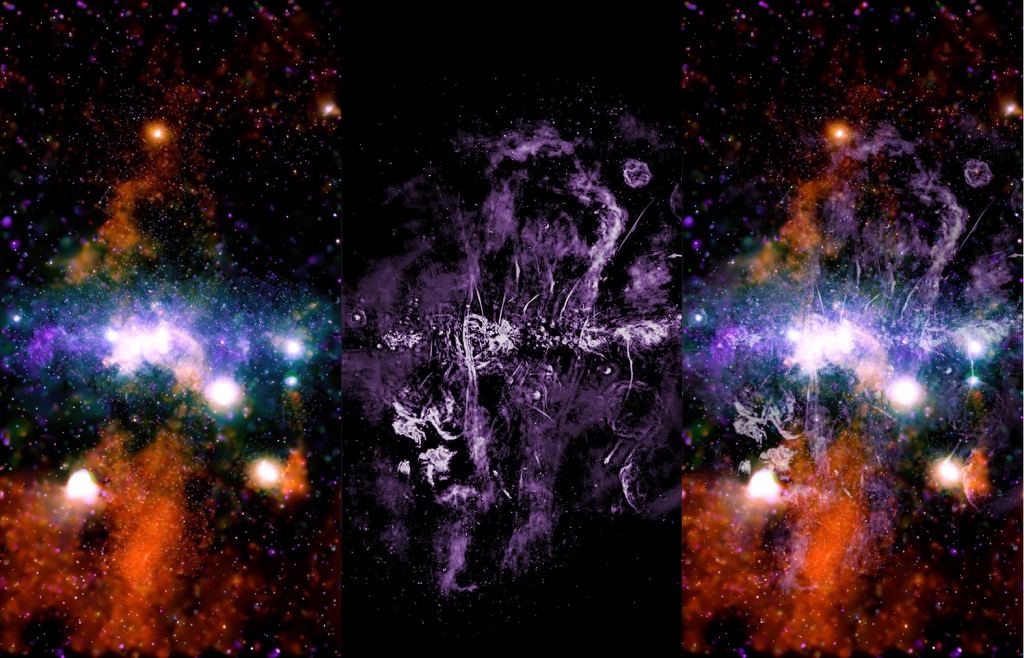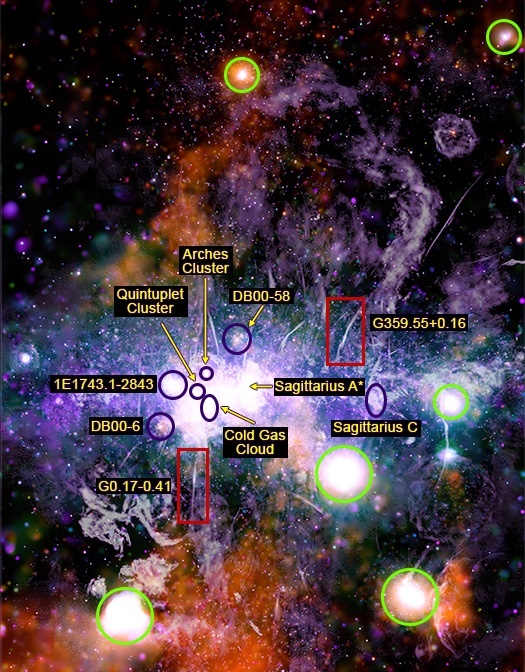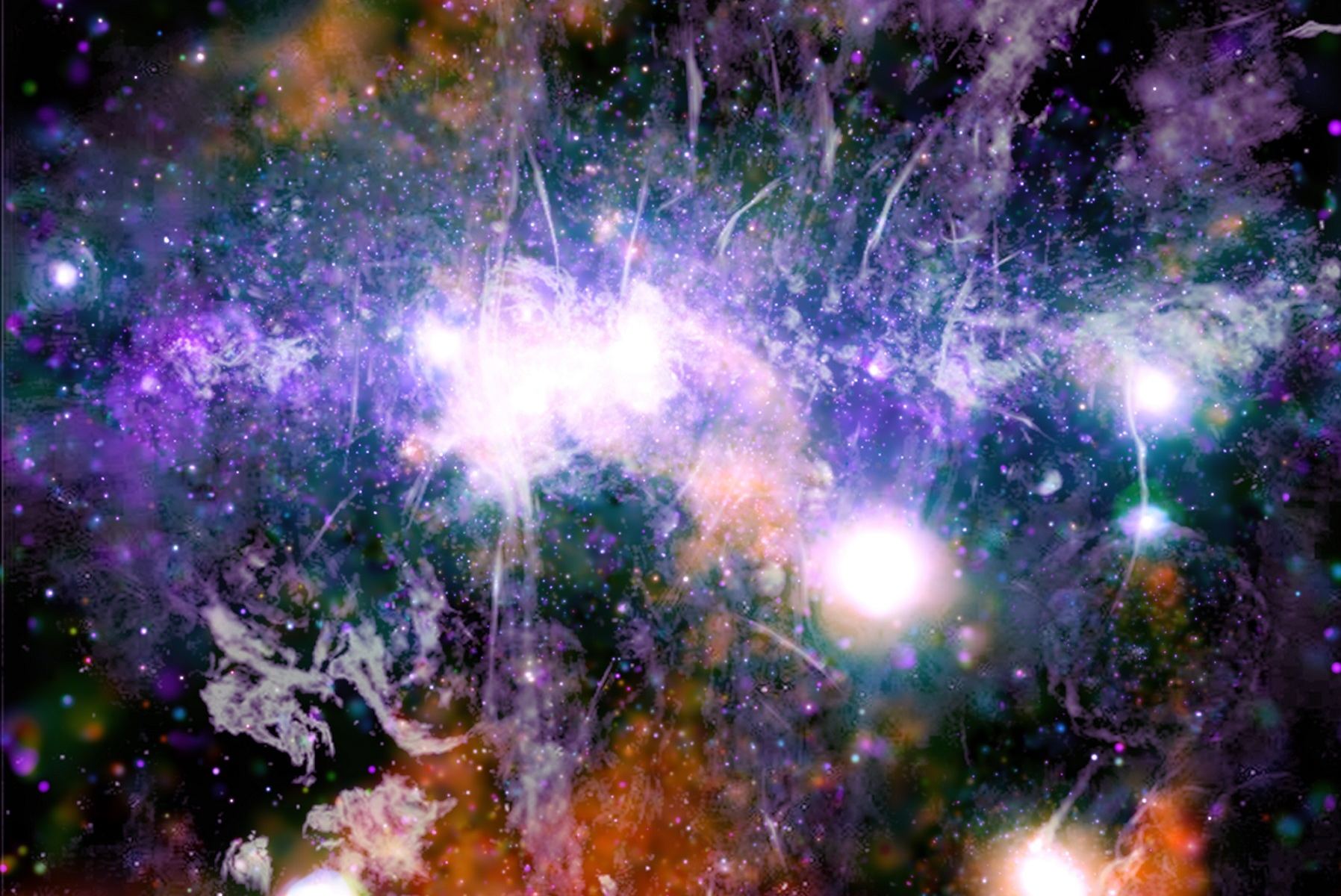The core of the Milky Way Galaxy (aka. Galactic Center), the region around which the rest of the galaxy revolves, is a strange and mysterious place. It is here that the Supermassive Black Hole (SMBH) that powers the compact radio source known as Sagittarius A* is located. It is also the most compact region in the galaxy, with an estimated 10 million stars within 3.26 light-years of the Galactic Center.
Using data from Chandra X-ray Observatory and the MeerKAT radio telescope, NASA and the National Research Foundation (NSF) of South Africa created a mosaic of the center of the Milky Way. Combining images taken in the x-ray and radio wavelengths, the resulting panoramic image manages to capture the filaments of super-heated gas and magnetic fields that (when visualized) shows the complex web of energy at the center of our galaxy.
This new panorama builds on previous surveys conducted by Chandra and other telescopes of the center of our galaxy. Due to the intense brightness caused by so many clustered stars, scientists can only study the region in depth by observing it in different wavelengths. This latest version includes views of the area above and below the plane of the galaxy, the central disk of the Milky Way, which shows the large plumes of hot gas extending outwards.

This allows particular features emanating from Galactic Center, such as radio wave filaments extending vertically and horizontally, to be fully appreciated. As you can see from the slides above (broken down by wavelength), different types of radiation are represented in different colors. The X-ray sources observed by Chandra (left) are depicted in orange, green, blue, and purple (for different X-ray energies) while radio sources observed by MeerKAT (center) are shown in lilac and gray.
The main features captured by the image are shown in an annotated mosaic (right), one of which is the radio source Sagittarius A*. This feature is close to the center in both the X-ray and radio visualizations and is the most powerful source of the energies observed. Another interesting feature is the slender thread-like features that are indicated in red boxes (designated G0.17-0.41 and G359.55+0.16).
These threads are made up of intertwined X-rays and radiowaves that extend for several light-years perpendicular to the plane of the galaxy. Both have been the subject of research, the most recent of which comes from the University of Massachusetts at Amherst. After observing G0.17-0.41, Professor Daniel Wang and his colleagues conclude that threads like these are bound together by thin strips of magnetic fields.
These strips may have formed as a result of magnetic reconnection, a phenomenon similar to what drives energetic particles from the Sun out into the Solar System (aka. solar wind or “space weather”). In this case, the weather is driven by volatile phenomena near Galactic Center, such as supernovae, tightly-packed stars ejecting plasma clouds, and outbursts of matter from regions near Sagittarius A*.

This causes magnetic fields that are aligned in different directions to collide and become twisted around each other, leading to the unusual structures we see here. Based on the image, these magnetic threads appear to occur at the outer boundaries of the large plumes of hot gas, suggesting that it could be the gas in these plumes that are driving the magnetic field to collide that create the threads.
These plumes of hot gas, which extend for about 700 light-years above and below the plane of the galaxy, are also addressed by Wang and his colleagues in their study. In theory, these plumes of plasma and energetic particles could represent galactic-scale outflows, similar to particles that are driven away from the Sun. It’s also possible that they are heated by supernovae and the many recent magnetic reconnections taking place near the center of the galaxy.
A detailed study of these threads will teach us a great deal more about the kind of space weather astronomers have been witnessing throughout the central region of our galaxy. For instance, they may discover that magnetic reconnection events play a major role in heating the interstellar medium (the gas and dust that exists between stars). It’s also possible they are responsible for accelerating particles to produce cosmic rays and the formation of new stars.
The panorama also reveals other wonders in the Galactic Center, like the Arches, Quintuplet, and other star clusters (DB00-58, DB00-6, and 1E 1743.1-28.43), the molecular cloud Sagittarius C, and the Cold Gas Cloud, all indicated in purple circles and ellipses. Be sure to check out the video below (courtesy of NASA’s Chandra X-ray Center) for more details on this panorama and what it reveals about the core region of our galaxy:
Further Reading: NASA, Chandra X-ray Observatory

